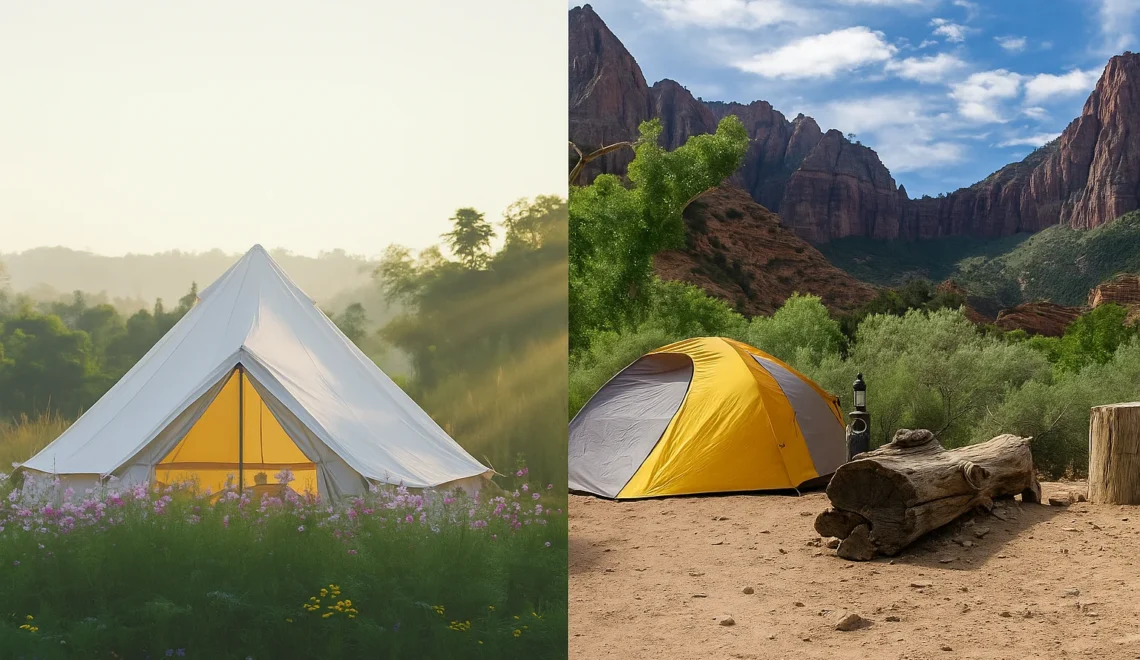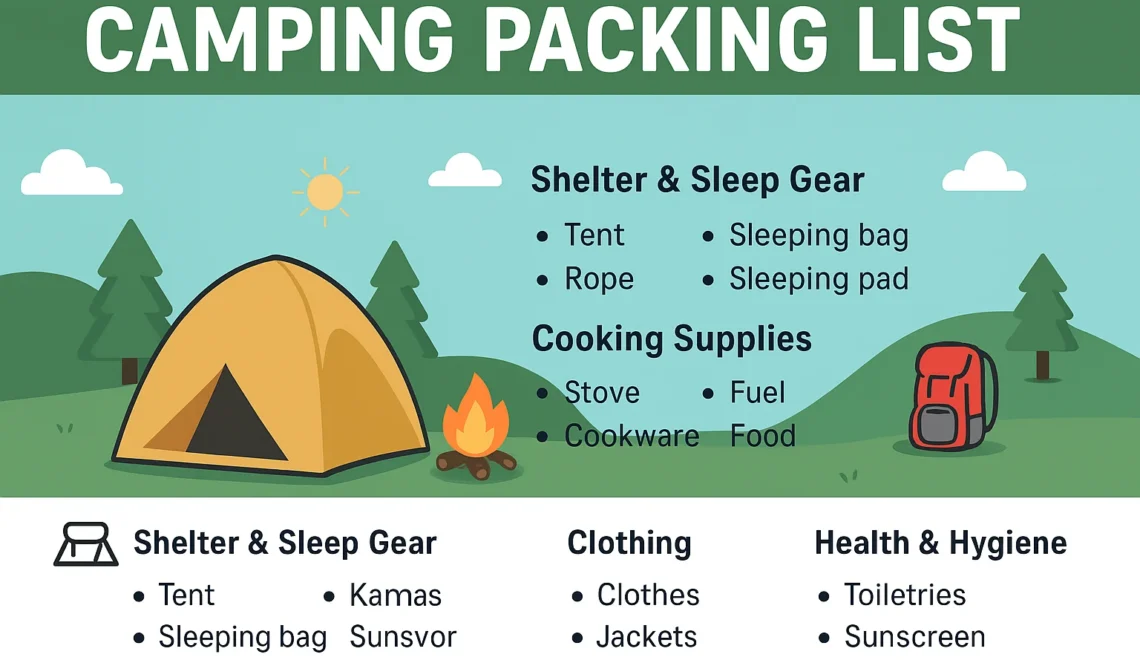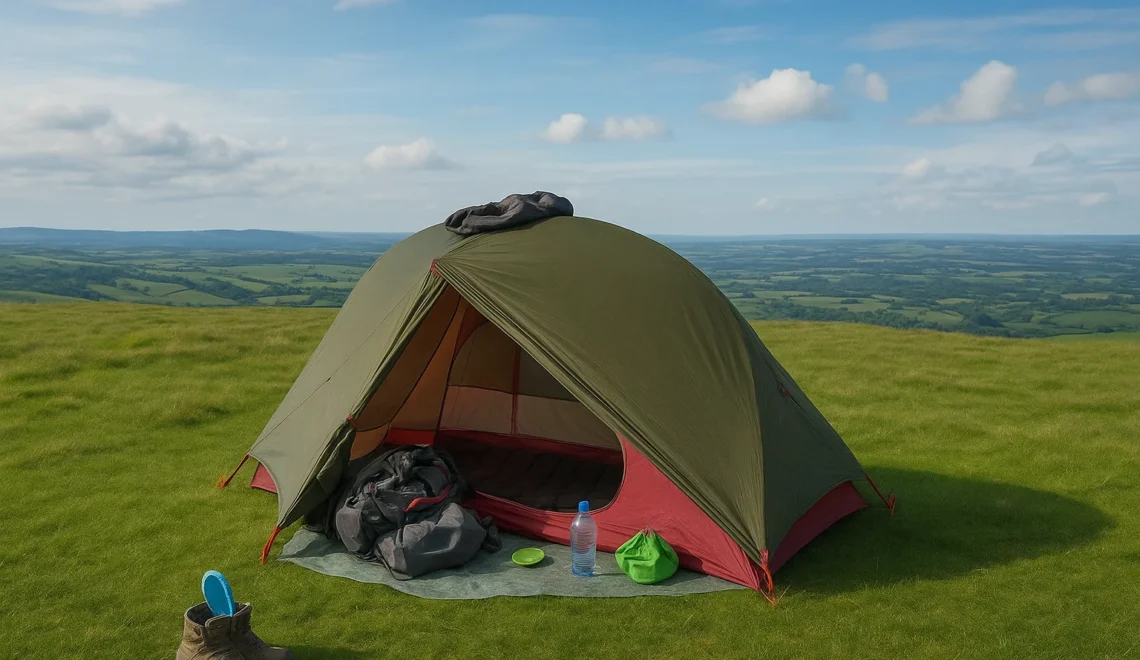
Glamping vs Camping – Choose Your Adventure
My love for the outdoors started young, running through the woods, roasting marshmallows, playing tag with other children, and fishing in silence gave me a deep connection to nature. Those early camping experiences were rooted in simplicity. I remember being a camp counselor, helping kids build fires, cook basic food, and sleep in sleeping bags on the dirt. We stayed in tents, and everything felt rustic and real. It was exhausting but rewarding, nothing like hotel comfort, but full of that raw adventure and open skies. Over time, my preference shifted, especially after visiting Hershey Park Campgrounds with my family. There were lanterns, stoves, and even an air mattress in my in-laws’ massive tent, almost like a mobile cabin. Though it still had that traditional camp vibe, it felt closer to home than the uncomfortable nights I remembered.
Now, I see why glamping has become a popular alternative. It offers all the luxury of a resort, with accommodation like real beds, clean linens, and even nets to keep out the creatures—yet you still wake up to fresh air, golden sun, and the songs of the wild. Whether you’re a rugged camper with a compass and a tarp or one of the glampers who pack for comfort, the love for nature remains the same. Glamping doesn’t replace camping, but it expands, especially for those who want to sleep well, eat without struggle, and not have to prepare a meal a mile away from their campsite. The differences may seem big in a side-by-side comparison, but both styles offer meaningful vacation memories. It’s about finding what suits your spirits, something traditional, raw, and outdoorsy, or something more elevated, without losing touch with the outdoor world.
Where You Sleep and How You Stay
One thing I’ve learned over the years is that your accommodation makes a huge difference in both camping and glamping. Traditional camping usually means sleeping in a tent, a cabin, or sometimes an RV. You bring your gear, do your cooking, and rely on your survival skills. There’s a strong sense of self-sufficiency in that setup—whether you’re starting a fire, pitching your tent, or finding creative ways to stay warm at night. It’s simple, even primitive at times, but it connects you deeply with nature and makes the experience feel raw and rewarding.
On the flip side, glamping takes all of that and adds a layer of comfort that honestly feels like a hotel in the woods. I’ve stayed at a glamping site where the tents were fully furnished with real beds, soft lights powered by electricity, and even private bathrooms. These luxurious alternatives give people who aren’t into roughing it a chance to enjoy the outdoors without giving up the little things that make them feel at home. Depending on the location, the amenities can really vary, but every spot I’ve visited focused on making the experience more relaxing and accessible, without losing the beauty of nature.
What You Bring vs What You’re Given
One of the biggest things I noticed when switching from camping to glamping was the difference in what you need to carry. With camping, you’re responsible for your equipment, things like gear, sleeping bags, cookware, and even a multi-tool for the unexpected. That sense of self-sufficiency is part of the appeal for some, and I’ve felt proud setting up a full campsite from scratch. It’s a lot of work, but if you enjoy being hands-on, the effort adds meaning to the experience.
Glamping, though, flips the script. At many glamping sites, all of that comes as part of a package. The accommodations are usually luxurious, with real beds, working heaters, and even Wi-Fi—the kind of comfort and convenience you’d expect from a hotel. Some places go further with thoughtful amenities and unique extras that make your stay feel special. I’ve stayed at spots where I didn’t need to unpack anything but clothes, which made the whole trip feel more relaxing and effortless.
The Feel of the Journey
When I think back to my most memorable camping trips, it’s the raw, authentic moments that stand pitching a tent in the rain, trying to navigate trails without cell service, or learning to adapt quickly to the unpredictable environment. Traditional camping offers a true connection to nature, where you must manage through small challenges and embrace a spirit of adventure. Whether you’re out exploring the wilderness or just disconnecting for a while, that kind of experience teaches patience and resourcefulness like nothing else.
On the other hand, glamping changes the tone completely. It offers a more controlled, luxurious kind of stay where the focus is on comfort, relaxation, and pure enjoyment. I’ve stayed at glamping sites where the blend of modern living and outdoor beauty felt seamless—no need to sacrifice the conveniences or comforts of home. This choice suits people who still want that connectivity with nature, just without the stress of traditional setups. Both styles have their value; it simply depends on what kind of journey you’re looking for.
Pros and Cons of Glamping
Advantages of Glamping
If you’re someone who loves nature but doesn’t enjoy the hassle that often comes with traditional camping, glamping can be a game-changer. The comfort and convenience it offers can turn any outdoor adventure into a relaxing trip. I remember my first glamping stay—stepping into accommodations that had real beds, working electricity, and even Wi-Fi felt surreal. The space was pre-equipped with all the essential items, so there was no need for heavy packing or long preparation. It took away everything that felt stressful about camping, letting me focus on enjoying the outdoors without worrying about gear or setup.
What makes glamping especially appealing is how well it caters to a wider audience, including people who may be less physically inclined or simply not interested in the challenges of setting up tents or sleeping on the ground. It combines the spirit of adventure with the feeling of luxury. With thoughtful amenities and smart design, you don’t have to give up the beauty of the natural world just to stay comfortable. Compared to camping, which demands more effort and endurance, glamping delivers a balanced experience—ideal for those who love nature but appreciate a softer landing.
Disadvantages of Glamping
While glamping is incredibly comfortable and stylish, it doesn’t always provide the same authentic outdoor experience that traditional camping offers. I’ve done both, and there’s something about the raw, immersive feel of building a fire, hearing night sounds through a thin tent wall, and feeling that real connection with nature. In contrast, glamping comes with luxurious accommodations and curated amenities that can make the trip feel more like staying at a boutique hotel than sleeping under the stars. For some, this trade-off removes the spirit of adventure that camping is all about.
Another thing to consider is the cost. Glamping is often far more expensive than regular camping because of the upscale services provided. I once had to plan months ahead just to secure a spot—advanced booking is usually required, which takes away that exciting spontaneity you get when you decide to camp on a whim. While it certainly has its perks, glamping sometimes misses the mark when you’re craving unfiltered adventures and true wilderness simplicity.
Pros and Cons of Camping
Advantages of Glamping
One of the best things about camping is the unfiltered and raw connection it creates with nature. When you’re out in the open, pitching your tent, cooking your meals, and navigating through unfamiliar terrain, every moment becomes part of the experience. Unlike glamping, where most things are ready for you, camping encourages self-sufficiency, which can be incredibly satisfying. There’s something honest and grounding about spending time in the wilderness, where you learn to do things on your own and feel a part of your surroundings.
It’s also a great way to travel on a budget. Camping is often more cost-effective than glamping and gives you the freedom to explore different landscapes without being tied to one spot. I’ve had some of my most exciting, spontaneous getaways simply by throwing gear in the car and heading out with no solid plan. That kind of flexibility is hard to match and adds a real sense of adventure that’s missing when everything is pre-arranged. It’s the unpredictability that makes it all so memorable.
Disadvantages of Glamping
While camping can be incredibly exhilarating, it comes with real challenges that not everyone is ready for. From my trips, I’ve learned that it demands a certain level of physical fitness, patience, and strong survival skills. The lack of basic amenities can make you feel uncomfortable, especially when you’re out in changing weather conditions or dealing with unexpected wildlife. I’ve spent nights drenched in a tent and mornings chasing off raccoons from our food—experiences that taught me a lot but also tested me.
A big part of any camping trip is solid preparation. You need to do careful planning, from gear lists to picking a safe and reliable campsite. I always do my research beforehand, but even then, some surprises are just unavoidable. For first-timers or casual travelers, all this can feel a bit daunting, especially compared to the ease of glamping. The rewards of nature are there—but only if you’re ready to put in the effort.
What You Need to Bring
Whether you’re planning a cozy getaway outdoors or diving into traditional camping, what matters. For camping, you’ll want to bring full gear, which means sleeping bags, cookware, and other essentials to be self-sufficient. You’ll also need sturdy shoes for exploring, outdoor clothing, a daypack, and a water bottle for hikes. I’ve had trips where forgetting a single piece of camping equipment changed the experience, so double-checking your list is worth it.
Now, if you’re glamping, especially at places like Under Canvas, you can pack light. Most of the comforts of home are already there. Think comfortable loungewear, slippers, and robes instead of heavy-duty gear. Toss in a book for relaxing, and maybe some board games, guitars, or yoga mats for downtime fun. You’ll still want your essentials, of course, but the idea is to enjoy nature without hauling a full camp kit.
FAQs: Glamping vs Camping
1. What is the main difference between glamping and camping?
The main difference lies in comfort and setup. Camping is more rugged and self-sufficient—you bring your gear, cookware, and sleeping bags. Glamping, on the other hand, offers ready-made accommodation with amenities like beds, electricity, and sometimes even bathrooms, so you can pack light and still enjoy the outdoors.
2. Is glamping more expensive than camping?
Yes, glamping is usually more expensive because of the luxurious setup and included services. You’re paying for the comforts of home in a nature setting, whereas traditional camping is more cost-effective and DIY.
3. Do I need to bring gear for glamping?
For most glamping trips, you won’t need to bring much. Places like Under Canvas often provide everything, including beds, linens, and even board games or yoga mats. Just pack personal essentials, outdoor clothing, and things for relaxing, like a book or slippers.
4. Which is better for first-time outdoor travelers?
It depends on your comfort level. If you’re new to the outdoors or want something easy, glamping is a great start. But if you’re up for challenges, enjoy exploring, and don’t mind cooking your meals, camping might give you a more authentic experience.
5. Can I still enjoy nature while glamping?
Absolutely! Glamping lets you stay close to nature while keeping the comfort and convenience of modern life. Whether you’re on a hike or relaxing in your tent with a guitar, you still get the peace and beauty of the wilderness—just with fewer bugs and more pillows.
Conclusion
Choosing between glamping and camping depends on what kind of experience you’re looking for. If you love the idea of a raw, hands-on connection with nature, value self-sufficiency, and don’t mind a few challenges, then traditional camping will likely suit you best. On the other hand, if you prefer the comfort, convenience, and luxury of modern accommodation while still enjoying the outdoors, glamping offers the perfect getaway—with fewer bugs and more comforts.
Both options have their charm, and neither is better than the other. It’s all about your preference, your energy for adventure, and how much you’re willing to pack. Whether you’re curled up with a book in a glamping tent or warming your hands by a campfire, the most important thing is that you’re outside, connected to the natural world, and making memories that feel true to you.




I’d have to examine with you here. Which is not one thing I usually do! I take pleasure in reading a post that may make folks think. Additionally, thanks for permitting me to comment!
This really answered my downside, thanks!
I was recommended this website by means of my cousin. I am now not certain whether this post is written through him as nobody else recognise such special approximately my trouble. You are amazing! Thanks!